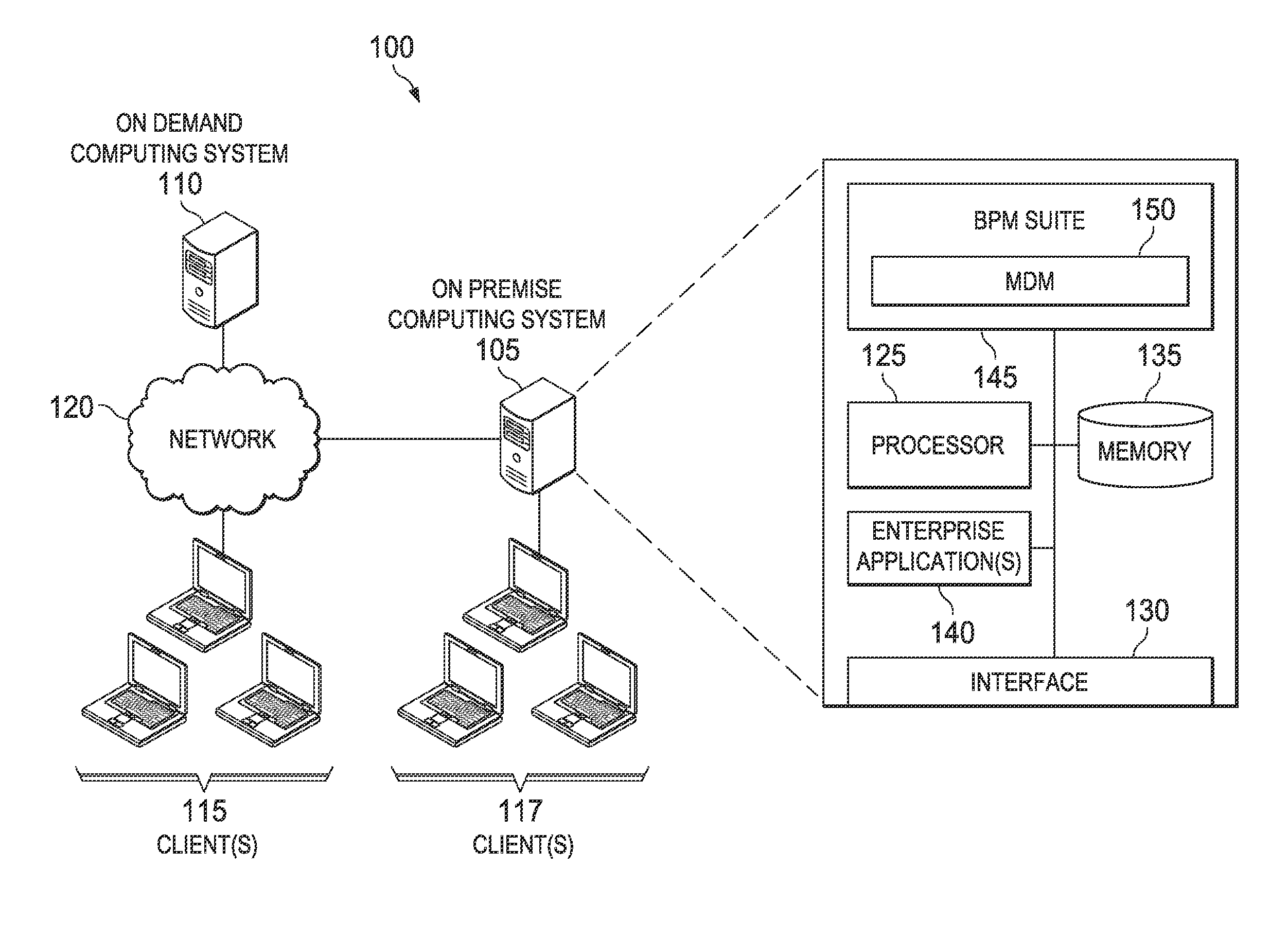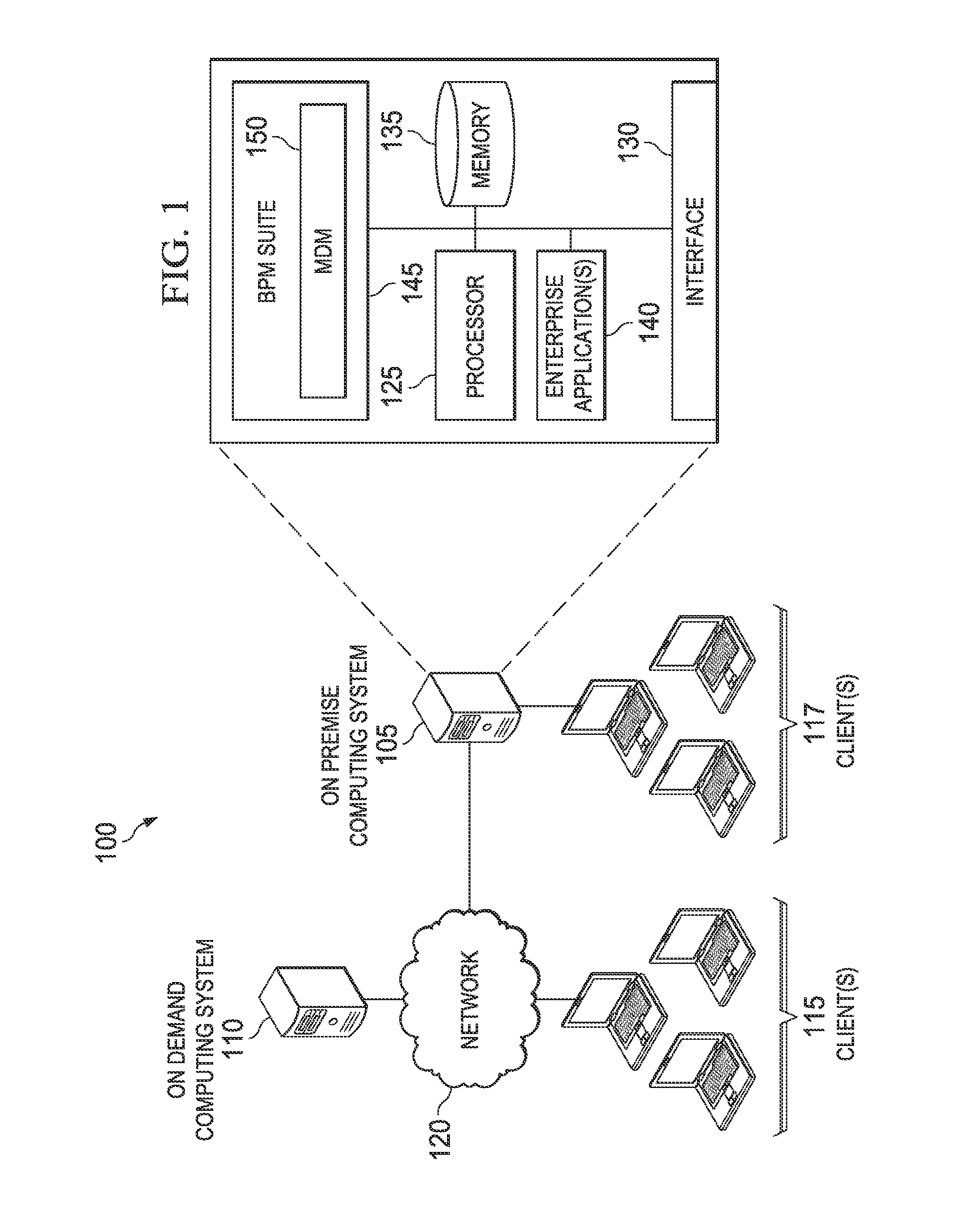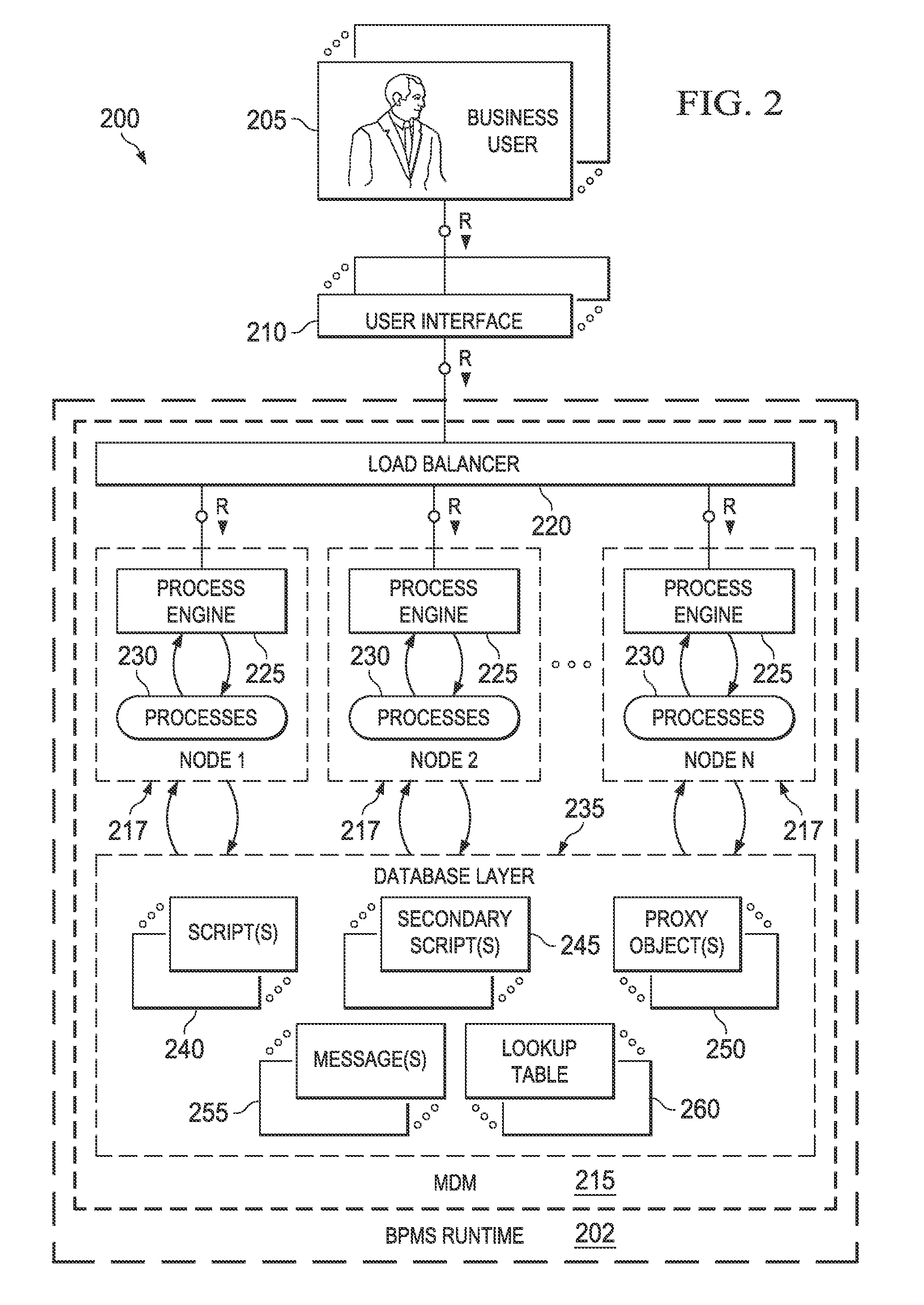Managing Business Process Messaging
a business process and messaging technology, applied in the direction of interprogram communication, program control, multi-programming arrangements, etc., can solve the problems of particularly challenging message delivery, achieve the effect of improving message throughput, improving scale-out characteristics, and increasing messages
- Summary
- Abstract
- Description
- Claims
- Application Information
AI Technical Summary
Benefits of technology
Problems solved by technology
Method used
Image
Examples
Embodiment Construction
[0020]FIG. 1 illustrates an example distributed computing system 100 including a business process management suite (BPMS) runtime 145 having a message delivery middleware (MDM) 150. As illustrated, the system 100 includes an on-demand computing system 110, an on-premise computing system 105 communicably coupled to one or more clients 117, and one or more clients 115 communicably coupled through a network 120. In alternative embodiments, however, one or more of these components may not be part of the distributed computing system 100 without departing from the scope of the present disclosure. For instance, in some embodiments, the on-demand computing system 110 may not be included in the system 100, and logic (e.g., software, middleware, source code, executable instructions, data, and otherwise) illustrated as residing on the on-demand computing system 110 may be located on, for example, the on-premise computing system 105 or another computing system communicably coupled through the n...
PUM
 Login to View More
Login to View More Abstract
Description
Claims
Application Information
 Login to View More
Login to View More - R&D
- Intellectual Property
- Life Sciences
- Materials
- Tech Scout
- Unparalleled Data Quality
- Higher Quality Content
- 60% Fewer Hallucinations
Browse by: Latest US Patents, China's latest patents, Technical Efficacy Thesaurus, Application Domain, Technology Topic, Popular Technical Reports.
© 2025 PatSnap. All rights reserved.Legal|Privacy policy|Modern Slavery Act Transparency Statement|Sitemap|About US| Contact US: help@patsnap.com



